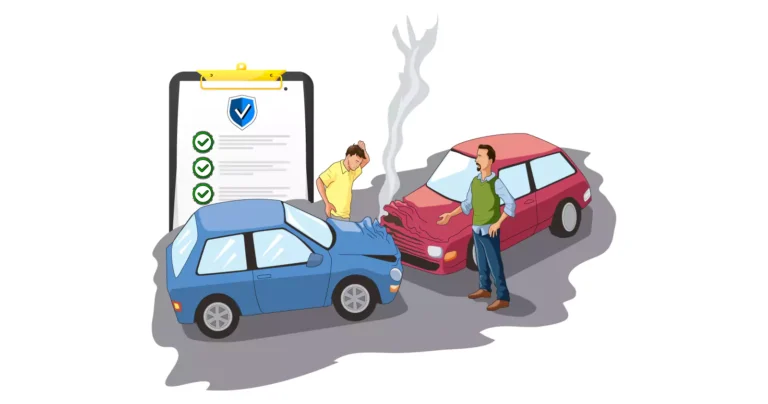Vehicle insurance is valuable security against uncertainty on the roads. Whether it is your car, motorbike, or any other means of transport, an appropriate insurance plan is key to ensuring financial security. However, automobile owners constantly face the dilemma of choosing between comprehensive insurance and third-party insurance. Both covers come with different features, making it important for the policy buyer to make an informed decision.
So, keep reading until the end to learn about the features of comprehensive and third-party insurance coverage and which is a better option for you.
What is Third-Party Insurance?
Third party insurance for car is the statutory minimum for vehicle owners in most countries. It protects against damages to a third party, such as physical harm, death, and property damage, in an accident you are responsible for. But it does not insure against any damage to your car. Here are the features of third-party insurance:
- Compliance with Law: Most nations require third-party insurance for all car owners. Driving without one can result in significant fines or legal penalties.
- Repays Third-Party Losses: In the event of an accident, the insurer will compensate you for the third party’s damages or injuries.
- Does Not Cover Own Damage: You are responsible for all repairs or losses to your vehicle, and third-party insurance will not cover them.
- Less Expensive: Since it provides restricted coverage, third-party insurance is much less expensive than comprehensive insurance.
Who Should Consider Third-party Insurance?
Buying third-party insurance will give you sufficient financial protection against damages caused to third parties. Here are the types of buyers who should consider getting third-party insurance:
- Owners of Older Cars: Third-party insurance could be the most economical option if you have an older car or a bike with a lower resale value.
- Penny-Pinching Buyers: In case you are seeking the cheapest coverage, getting third-party insurance is a good decision.
- Low-Usage Drivers: Third-party cover could be enough if you do not drive much and your chances of accidents are low.
What is Comprehensive Insurance?
Comprehensive insurance offers wide-ranging coverage, safeguarding against both third-party liabilities and own damage. It insures your car against accidents, natural calamities, theft, vandalism, and even fire. Here are the significant features of comprehensive insurance:
- Third-Party Liability Coverage: Similar to third-party insurance, getting comprehensive bike insurance or car insurance ensures financial protection against damages or injuries inflicted on others.
- Own Damage Protection: In contrast to third-party insurance, it also compensates for repairs to your car.
- Extends to Natural and Man-Made Disasters: It offers coverage for floods, earthquakes, riots, and theft.
- Add-Ons as Per Choice: Full insurance policies include zero depreciation, roadside assistance, and engine cover for extra riders.
- Increased Premiums: Due to its wider range of coverage, comprehensive insurance is costlier than third-party insurance.
Who Should Consider Buying Comprehensive Insurance?
Sometimes, the damages to your vehicle from an unfortunate event can be massive. In that case, getting comprehensive coverage is a good decision. Here are the types of buyers who can consider getting this type of vehicle insurance:
- Owners of New or Costly Vehicles: If your vehicle is new or worth a lot in the market, comprehensive insurance protects you against financial loss in case of damage or theft.
- Regular Drivers: Regular commuters are more likely to have accidents, so comprehensive insurance is a better option.
- Residents in High-Risk Areas: Comprehensive insurance will provide greater security if you reside in an unsafe area.
Making the Right Choice
Before purchasing vehicle insurance, you should evaluate the protection features and coverage amount of policy plans. Therefore, consider the following factors before selecting between the two types of plans:
- Cost
If budget is your priority, third-party insurance is the way to go. But if you can spend a bit more, comprehensive insurance is more protective. However, a comprehensive insurance policy plan gives you broader coverage.
- Vehicle Age and Value
If your vehicle is old and of low market value, third-party insurance can be purchased because the repairs can be easily managed. But comprehensive coverage is recommended for newer cars.
- Risk Factors
If you drive often or reside in a region with a high incidence of accidents, theft, or natural disasters, comprehensive insurance is the better option. Moreover, this insurance plan will give you better protection against many unfortunate situations compared to third-party insurance plans.
Final Thoughts
Summing up, selecting the proper insurance policy is all about finding the right balance of cost and coverage. So, third-party insurance is your best option if you are after a low-priced insurance plan to comply with the legal mandate of vehicle insurance in India. However, if you need absolute peace of mind, coverage against unforeseen accidents, and financial protection, comprehensive insurance should be preferred.
Ultimately, your choice should align with your circumstances, risk exposure, and budget. Evaluate your needs carefully to ensure you are adequately protected on the road!
